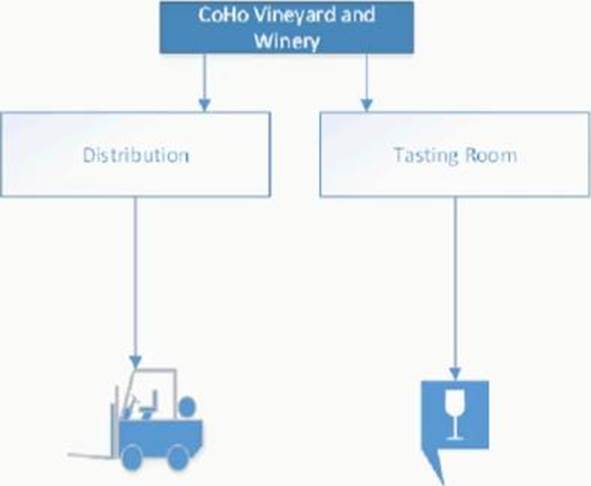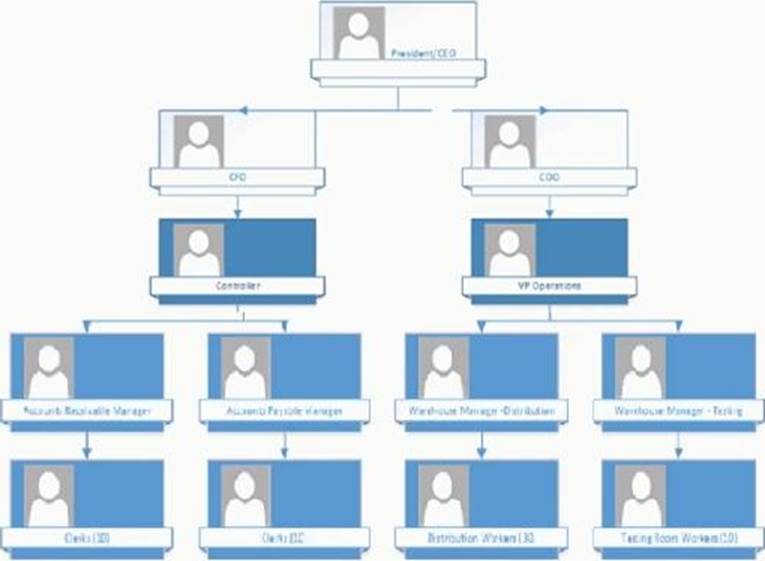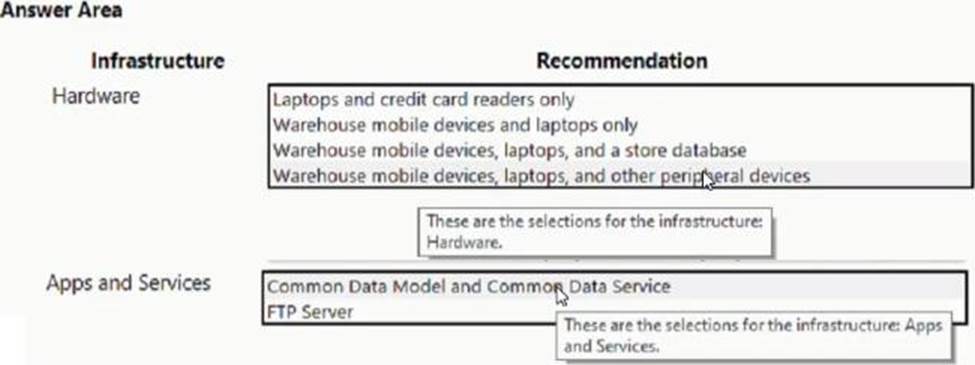38. Topic 2, CoHo Vineyard and Winery Case Study
This is a case study. Case studies are not timed separately. You can use as much exam time as you would like to complete each case. However, there may be additional case studies and sections on this exam. You must manage your time to ensure that you are able to complete all questions included on this exam in the time provided.
To answer the questions included in a case study, you will need to reference information that is provided in the case study. Case studies might contain exhibits and other resources that provide more information about the scenario that is described in the case study. Each question is independent of the other questions in this case study.
At the end of this case study, a review screen will appear. This screen allows you to review your answers and to make changes before you move to the next section of the exam. After you begin a new section, you cannot return to this section. To start the case study
To display the first question in this case study, dick the Next button. Use the buttons in the left pane to explore the content of the case study before you answer the questions. Clicking these buttons displays information such as business requirements, existing environment, and problem statements. If the case study has an All Information tab, note that the information displayed is identical to the information displayed on the subsequent tabs. When you are ready to answer a question, dick the Question button to return to the question.
Overview
CoHo Vineyard and Winery is based in the United States. The company has a single vineyard. The company distributes full pallets of wine worldwide and sometimes sells wine by using a private label. Grape growing and wine production operations are owned and operated by a third-party company. The company uses bottles, accessories, and other disposables from a company in China.
CoHo Vineyard and Winery opens a second location. This location manages inventory for Wine Club members and includes a wine tasting room. The location also includes a warehouse and distribution center.
The wine club currently has 200 members. The company hopes to increase this number. The company holds events for club members in the tasting room and ships both full cases and individual bottles to members. The tasting room is not treated as a retail store. All sales to club members only and purchases must be made on-account.
Company structure
The following graphic shows the company structure:

Organization
The current organizational chart and roles as follows:

Current environment
Coho Vineyard and Winery currently uses manual processes for most of its operations. The company stores names and phone numbers for club members and prospective club members in a Microsoft Excel workbook. The sales team currently tracks club membership in a separate system. Sales team stock awards are granted on a three-year basis.
The solution for the sales Team cannot be replaced for three years.
• The types of wine, such as cabernet sauvignon and red blends are tracked as separate items. Each item will have a year associated with it such as Red Blend 2017, 2018, 2019, etc. The items are updated for the year association annually.
• Peak times for order entry could be in the hundreds. This typically happens when first and second shift workers overlap and all users are on the system, as well as orders imported in.
• Packaging materials, bottles, and accessories are received in the warehouse FOB Destination from the manufacturer in China.
• Each retailer has individual item numbers, barcode placement descriptions and other additions such as pictures and details of the wine year and flavor notes.
CoHo Vineyard and Winery has outgrown their legacy ERP system and plans to implement Dynamics 365 Finance. CoHo wants to use out-of-the-box tools which are linked to the system where possible and not create new tools.
Licensing and organization
• Only the President/CEO, CFO, COO, Controller and VP Operations users must be able to access finance and warehouse features.
• Warehouse users must only have access to warehouse function. All other users must have access to finance functions.
• The distribution center must have mobile scanners for the warehouse. The tasting room will not have mobile scanners.
• The inventory cost must be tracked separately by distribution center or tasting room.
Club membership events
• You must ensure the members created in their existing system are also customers in Dynamics 365 Finance and that the customers do not exist in both systems under multiple record numbers.
• When tasting events are planned, text notifications must be sent out to the club members.
• text notifications must sent out to non-club members to encourage the non-members to join the club.
• During tasting events. CoHo will need access to place orders during the event but will not have the need for cash registers.
Warehouse and shipping
• The system must be able to track inventory throughout the whole warehouse process.
• A Certificate of Origin must accompany each shipment.
• Private label items that are shipped to retailers must be stored and costed as a single item number at CoHo.
• The system must be able to compare year-to-year performance of a single wine type.
Implementation
• Business processes must be documented as step-by-step processes and must align with the process flows in a visual format
• Data will be migrated and is a requirement for order entry.
• Data migration must be completed prior to testing.
• You must track each step of process validation so that the users have ownership for their individual functional areas. The tracking system used should be integrated with the system where possible.
Issues
• Users are struggling to understand the new system's processes.
• CoHo is concerned that the go-live will may not go smoothly.
HOTSPOT
You need to determine an infrastructure for the solution.
What should you recommend? To answer, select the appropriate options in the answer area. NOTE: Each correct selection is worth one point.



LEAVE A COMMENT